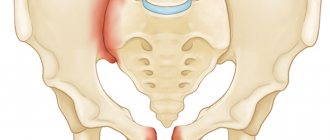Every person must know what blood types and Rh factor are. And everyone must be aware of what type they and their loved ones belong to, since sometimes emergency situations arise in which knowledge can save lives.
Information about these indicators can influence the choice of a sexual partner, since if the Rhesus discrepancy occurs, there is a risk of complications for the subsequent bearing of the child. So, what is blood, and what determines its subtypes according to two systems: AB0 and Rh?
What is blood, and why is it divided into types?
Our body is a complex system that needs communication and coordination of its individual parts. For this purpose, there is a type of connective tissue - blood. It moves along a special pattern of veins and arteries with the help of the heart, which pushes it from birth to death of a person.
This liquid performs important tasks:
- Transport, delivering the necessary substances, oxygen, hormones and other biologically significant elements that regulate the functioning of internal organs, removing “waste” from cell activity.
- Regulating, maintaining a relatively uniform temperature throughout the body.
- Protective, neutralizing infections and other dangers.
- Homeostatic, maintaining the balance of chemical parameters.
- Nutritious, filling the organs with useful substances.
Although blood performs the same functions in every body, it differs from person to person. The name of the classification that organizes blood types is AB0. It implies 4 types of such connective fluid, which differ due to the presence or absence of antigens and antibodies in them.
During life, the blood subtype does not change, it is constant. The group depends on heredity and is calculated based on the results of the parents.
What types of blood do people have, and what does each of them mean? Let's figure it out!
Internal hemorrhage
Internal bleeding can occur in almost any organ or cavity of the body. This can be the esophagus, stomach, rectum, bladder, kidneys, lungs, ventricles of the brain, abdominal and pleural cavity, joint and skull cavity, etc. Women often experience cases of uterine bleeding.
The general symptomatic picture of internal bleeding can be supplemented by specific manifestations that depend on the location of the bleeding site. Thus, the general symptoms (subjective signs) of this type of bleeding are:
- extreme thirst, dry mouth
- weakness, dizziness
- shortness of breath
- pallor of the skin and mucous membranes
- darkening of the eyes, fainting state
- possible fainting
- increased heart rate
- decrease in pressure.
The rate of manifestation of the above symptoms depends on the rate of blood flow.
Specific manifestations of internal bleeding:
- blood released through the mouth is a sign of bleeding in the respiratory or digestive system
- Foamy, bright red blood is a sign of bleeding from the lungs
- bloody vomiting, loose bloody stools – observed with gastric blood loss
- bloody stools, stools streaked with blood - characterizes intestinal bleeding
- stool with streaks or blood stains – observed with rectal fissures.
Internal bleeding is not easy to recognize, especially for its hidden form, which does not manifest itself with any specific signs. Among internal hidden hemorrhages, the most common are hemorrhages in the joint cavity, in the ventricles of the brain, in the pleural and abdominal cavities.
Internal bleeding is always life-threatening, for this reason, if the first signs are present, you should immediately seek medical help.
Types of blood
The division of blood types is presented in the following table:
| Latin number and letter | Antibodies | Antigens |
| I or 0 | α, β | No |
| II or A | β | A |
| III or B | α | IN |
| IV or AB | No | A, B |
Both antigens and antibodies are protein compounds, the presence or absence of which determines the blood type. The former are located on the membrane of erythrocytes, and the latter are in the plasma. At the same time, they interact with each other.
Antigens are divided into two types: A and B, their combination creates the fourth blood group. The same picture applies to antibodies that “live” in blood plasma. Their simultaneous presence creates the first group. For the remaining two, the combination is either A and β (second), or B and α (third). When antibodies of different types meet, they react with antigens and form a precipitate. When transfusion of blood of the wrong type occurs, an agglutination reaction occurs. If there is little of this fluid, the situation is limited to anemia and jaundice. A large volume of foreign blood can be fatal.
What types of blood a person has are regulated by the AB0 system, which takes into account all possible combinations of antibodies and antigens. To find out what type a person belongs to, a special test is carried out. A blood sample is taken and mixed with the appropriate protein compounds and, depending on the amount and type of normal reaction and pathological, the result is determined.
Venous bleeding
Venous bleeding occurs with superficial and deep wounds of any size, in which the integrity of the saphenous or intermuscular veins is disrupted. In this case, quite intense bleeding occurs. The following symptoms can clinically recognize venous bleeding:
- Dark blood;
- The bleeding is very heavy, like a constant flow of blood from the wound;
- It decreases when the area below the wound is pressed.
Venous bleeding is extremely dangerous if medical assistance is not provided in a timely manner. In this case, massive blood loss occurs in a short time, up to a state of shock. They rarely stop on their own, so stopping them should not be neglected. Superficial veins bleed less intensely, while damage to deep veins causes profuse bleeding.
What is Rh factor?
The effectiveness of the transfusion depends on what blood types a person has. The Rh factor must also be taken into account before this procedure to prevent sensitization of the body.
This indicator itself, Rhesus, means the presence or absence of a lipoprotein, which is located on the outer side of the red blood cell membrane. There are only two states:
- Rh+, which means the presence of such a protein,
- Rh -, which implies its absence.
More than 85% of the world's population has a positive Rh factor. The remaining 15 have red blood cells without such a protein, which means they belong to the rare Rh- species. What does this mean for a person, and how can it affect his life and health?
The main thing when transfusing blood, after determining the required group, is not to mix opposite Rh indicators. It is vitally important that patients with Rh+ receive this fluid and vice versa.
This is justified by the fact that when a lipoprotein appears in the connective tissue, which should not be there (in Rh-people), the immune system “sees” it as its worst enemy and actively produces antibodies designed to destroy it. The aggressive defensive reaction is maintained, and if a mistake of the same nature is repeated, the red blood cells stick together.
Types of bleeding by reason
There is a certain division of bleeding that occurs according to the reasons that cause it:
Mechanical bleeding
These include situations caused by changes in the integrity of blood vessels as a result of traumatic effects on them from the outside. This also includes combat injuries, as well as disorders caused by surgical operations.
The result can be heavy bleeding, sometimes taking a protracted nature. In certain cases, it is necessary to apply tight bandages to the wound in order to prevent further aggravation of the situation.
Arrosive bleeding
Such bleeding includes those that occur as a result of loss of integrity of the vessel, which occurs due to the fact that a tumor has grown through it; ulcer formation or necrotic changes in the tissues of the body can also cause similar changes.
Diapedetic bleeding
With such bleeding, there is no violation of the integrity of the blood vessels. However, an increase in the overall level of vascular permeability may be noted as a result of changes in the molecular composition of their walls. This situation is typical for a number of diseases, among which the most common are scarlet fever, poisoning with phosphorus and its vapors, and scurvy.
Difficulties with Rhesus
The body of a person with positive rhesus is "more secure" than that of people with negative rhesus. Because Rh+ is common, it is much easier to obtain in hospitals. If there are still quite a lot of people with negative Rh of the first group, and collecting their donor fluid in the required quantity is not difficult in large medical centers, then with the same Rh, only of the fourth group, it is almost impossible.
Such blood is rare, so it happens that patients in acute condition, after a serious accident or injury, die due to a lack of appropriate donor fluid.
Troubles due to Rhesus threaten pregnant women. This happens if the mother and child do not have the same indicator. This can cause rejection, up to and including termination of pregnancy. Complications in this situation often occur, and in late stages of pregnancy. Such women are much more likely and longer to remain in confinement and resort to artificial childbirth or caesarean section. However, in such a situation, a disabled child is more likely to be born.
A conflict involving such a protein compound appears only if the woman has a negative group, and the child has a positive group. The mother's immune system reacts to lipoprotein, which is produced in the child's blood, and secretes antibodies designed to destroy it. This is dangerous for the baby, since his red blood cells die during the attack. In all other cases, there can be no conflict, and the father's Rh factor has no fundamental significance.
However, expectant mothers should not worry, since with proper awareness of doctors and regular examinations, this can be successfully overcome. Modern medicine has a number of drugs that can smooth and balance the body of mother and child and reduce risks to a minimum. The main thing is that a pregnant woman should think less and be nervous about this.
During childbirth, a woman is given a special drug that suppresses the production of antibodies. This allows their production to slow down in subsequent pregnancies. If this is not done, by the second and third births their number will increase, which will have an even stronger effect on the child’s body, his growth and the entire process of gestation.
Fundamentals of life safety 11th grade
Home | Life Safety Fundamentals | Lesson materials | Materials for life safety lessons for grade 11 | Lesson plan for the academic year | First aid for bleeding
Every citizen should know the rules of first aid, which are studied in the course “Fundamentals of Life Safety.” In this chapter, we will look at the rules for providing first aid for wounds and bleeding, some types of injuries, as well as for traumatic shock, acute heart failure, stroke and cardiac arrest.
Why do you need to know your blood type?
All this is understandable, but why do you even need to understand what groups there are and which of them your own blood belongs to? In fact, this is very important; a person’s life sometimes depends on knowledge or ignorance of this factor:
- Blood transfusion is possible only if the groups match. Before scientists discovered that there were several types of this fluid, such operations ended in death due to rejection of the transfused tissue.
- The blood type is determined in newborns with hemolytic disease - when the group of mother and child is incompatible, which leads to complications for the baby.
- Before surgery, the specifics of the blood are determined in order to perform a transfusion if necessary.
- The blood type and Rh factor are also determined during pregnancy in order to track their compatibility in mother and child and avoid danger to the baby.
Such information becomes of great importance in emergency situations: after accidents or mass disasters. Therefore, it is written in medical documents and even school diaries, and it is recommended to make special inserts in a passport or driver’s license. This is necessary for doctors to quickly respond to large blood losses.
Arterial bleeding
Given the deep location of the arteries in the tissues, their damage is the least common. The most common causes are knife, gunshot and mine-explosive wounds. In everyday life, these can be puncture wounds from thin and narrow objects. Clinically, arterial bleeding can be suspected by the following signs:
- Bright red blood;
- Flows out in the form of a pulsating stream;
- Very intense;
- Does not decrease with normal pressure on the wound or tissues above and below it;
- The localization of the wound corresponds to the projection of the course of large arteries.
Typically, arterial bleeding is very intense and quickly leads to massive blood loss and shock. If a complete rupture of an artery occurs, then in just one minute you can lose almost the entire volume of circulating blood. Therefore, such bleeding requires immediate assistance.
Classification
Classification of bleeding is a necessary measure that allows you to quickly provide the right assistance to stop the bleeding.
The main types of bleeding and methods for stopping it should be known to every person, and the algorithm for stopping bleeding must be remembered for the rest of your life. Sometimes a delay in action, or improper dressing of a wound can cause death.
| External bleeding | Internal bleeding |
| Venous. Capillary. Arterial. Mixed type. | Spread of blood throughout the abdominal cavity. For internal organs. In the gastrointestinal tract. |
| Types of bleeding, based on their abundance (common for external and internal blood loss): | |
| Light form. Average. Severe form. An extremely difficult stage. | |
Slide captions:
Test Bleeding Part No. 1 Performed by: Deputy Director for Safety of Lyceum No. 1 Urmanov Mikhail Yuryevich, VKK Komsomolsk-on-Amur 2013
1.1 What is hypoxia? A - oxygen starvation; B- dehydration of the body; B- overheating of the body; G- cooling the body; D - thermal irradiation. 1.2 Bleeding is - A - poisoning with hazardous substances; B- respiratory function; B - high blood pressure; D- bleeding from blood vessels when the integrity of their walls is damaged; D - bone fracture.
1.3 How to stop heavy venous bleeding? A- apply a pressure bandage; B- apply a tourniquet; B- treat the wound with alcohol and cover with a sterile cloth; D- disinfect with alcohol and treat with iodine; D- sprinkle with salt. 1.4 If the carotid artery is injured, it is urgent to: A- apply a tight bandage. B- apply a tourniquet. B- pinch the artery below the wound with your finger.
1.5 When wounded, blood flows in a thick, continuous stream. This bleeding is A- Parenchymal B- Venous. B- Capillary. G - Arterial. 1.6 Characteristic signs of arterial bleeding: A- The blood is dark in color and flows out in an even stream. B- Scarlet blood flows out in a pulsating stream. B- The entire surface bleeds, flowing out in the form of small drops.
1.7 Arterial bleeding occurs when: A- damage to any artery due to a deep wound; B- superficial wound; B- shallow wound in case of damage to any of the vessels. 1.8 Reducing bleeding by elevating the injured limb is mainly used for: A- internal bleeding; B- superficial wounds; B- any wounds of the limb
1.9 The most reliable way to stop bleeding in case of damage to large arterial vessels of the arms and legs is: A- applying a pressure bandage; B - finger pressure; B - maximum flexion of the limb; G - application of a tourniquet; 1.0 In case of an open fracture of a limb with severe bleeding of the wound, it is necessary first of all: A – Treat the edge of the wound with iodine; B – Immobilize the limb; B – Wash the wound with hydrogen peroxide; D - Stop the bleeding.
Answers: 1.1-A 1.2-G 1.3-B 1.4-B 1.5-B 1.6-B 1.7-A 1.8-B 1.9-G 1.0-G
Scores: “5”-10-9 points “4”-8-7 points “3”-6 points
The most dangerous bleeding occurs when arteries are injured. This is due to the fact that in these vessels blood flows with a certain pressure and if the wall is damaged, the bleeding takes the form of a gushing stream. Blood loss increases rapidly and, if first aid is not provided, the victim may develop hemorrhagic shock. Pre-medical measures to stop bleeding are very simple and no less effective. In order not to get confused in an emergency, the article presents first aid for arterial bleeding, broken down point by point to make it easier to remember.











